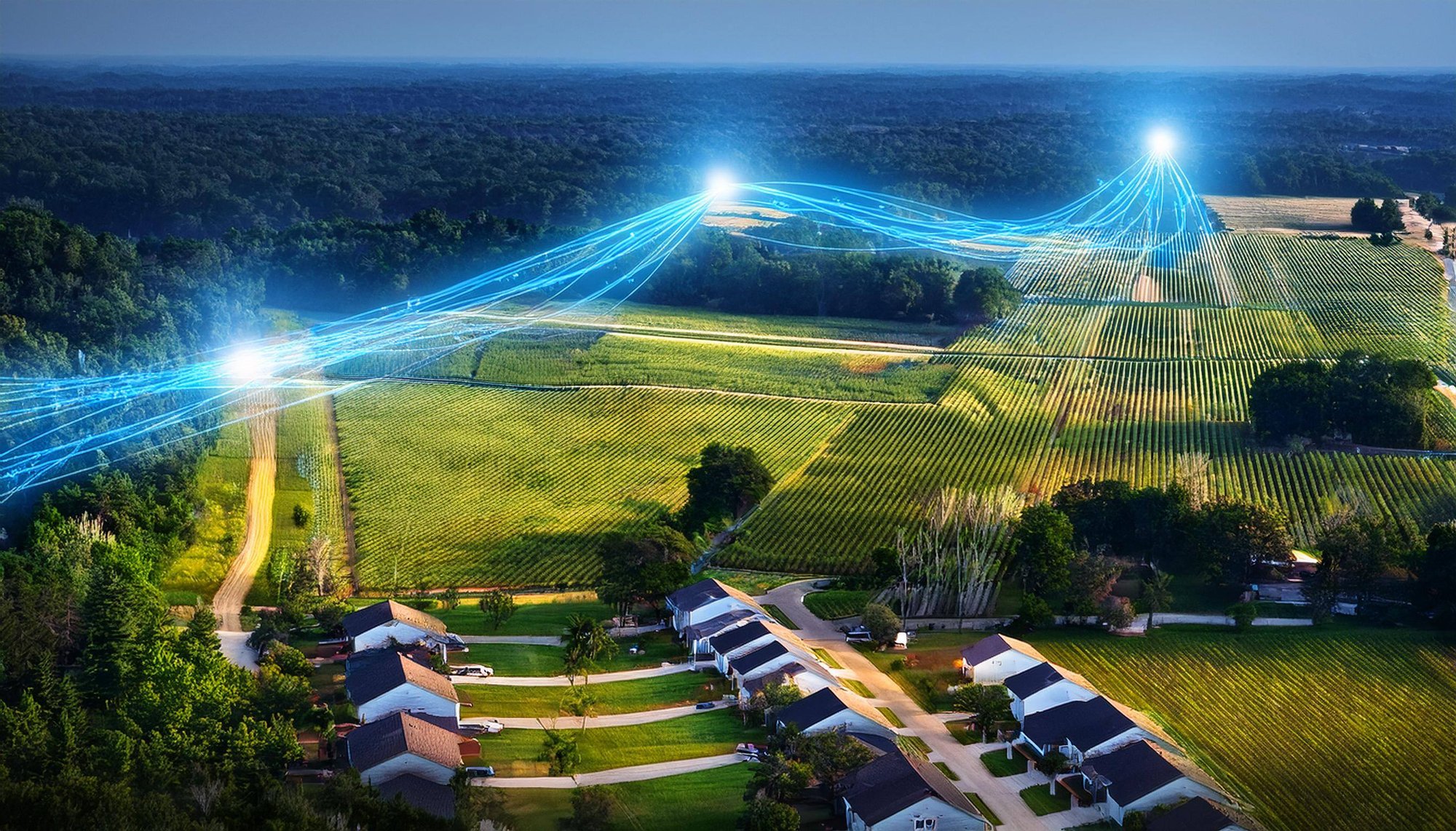Legacy Systems And Network Modernization
Necessity for Evolution as End of Life for Legacy Networks Looms
There is a strong tie between the constant growth in demand for faster internet, more bandwidth and the need for greater network capacity, and the modernization of legacy cable networks and systems. Continuous network modernization to alleviate capacity issues and meet capability requirements is an everyday challenge for any cable operator.
For the many operators whose HFC networks rely on Cisco’s GS7000 optical nodes, that headache has worsened in recent months. The company recently confirmed end of life dates for the GS7000 nodes. The end of sale date is November 11 2022, the last service contract renewals will follow in February 2027 and the final day on which Cisco will provide service and support to GS7000 users will be November 30 2027. You may be thinking, that’s several years away. Well, the clock is ticking, and time flies when it comes to managing vast legacy cable networks that have a complex legacy infrastructure.
GS7000 End Of Life Announcement Creates An Expensive Problem
The need to modernize upgrade legacy nodes and CMTS infrastructures has been clear for a long time. In many networks these components are likely to have been in situ for years. In some cases, it’s been more than a decade.
Add into the scope of aging component the complete absence of any upgrade or full replacement of all the nodes in the network and suddenly the infrastructures incorporating these obsolete components will not be suitable for business growth. In this scenario, there is no option to leverage Distributed Access Architecture (DAA), Flexible MAC Architecture, which is using DAA as its foundation or any future DOCSIS 4.0 deployments.
Many legacy CMTS vendors have also published end of life notices for CMTS line-cards. Day-to-day operation and maintenance of all these legacy technologies has been made more practically difficult, time-consuming and expensive as a result of significant supply problems and delays. Silicon manufacturers are prioritizing new silicon products, meaning that lead times have become painfully long for operators trying to source replacement components for legacy network equipment.
A Perfect Storm Of Operational And Strategic Challenges
The end of life announcements, supply chain issues, and technology obsolescence create a perfect storm of operational and strategic challenges for operators running networks that rely on GS7000 nodes.
The delay of strategic decisions around infrastructure enhancement planning and deployment creates even greater difficulty to handle the legacy infrastructure that has in result of failed evolution, become more complex.
Many operators now find themselves trapped in a situation where significant amounts of capital are effectively stranded in ageing networks that now only offer ever smaller returns on investment and declining levels of performance.
What are the solutions that can enable network modernization and evolve to networks that are capable of delivering the capacity and services operators need today, and will need even more of in the near future. The keys to modernization will be the opposite of the legacy model.
Cable and broadband solutions that can allow operators to more easily adapt to changing requirements with agility, and in a sustainable way is now an urgent focus.
A Clear And Urgent Need To Modernize the Legacy Access Network
In the longer term, increased use of metaverse-ready technologies, such as virtual reality (VR) and augmented reality (AR) is likely to provide a further boost to demand for high speed, high quality, reliable broadband services, as metaverse technologies are used to deliver new forms of social media, entertainment, workplace, education and other commercial applications.
Any operators seeking to deliver effective broadband services that meets all of these requirements – and the requirements and expectations among customers that are likely to continue to evolve during the next few years will need a network that is fit for purpose, scalable and flexible.
How to Avoid Expenses, Disruption And Downtime when Moving Away From Legacy Network Components
Node Replacement vs Node Evolution
Most operators will be horrified at the prospect of having to replace all of the GS7000 nodes in their networks. Some tier one and tier two operators have installed bases of several thousand of these nodes across their networks. We estimate that more than 100,000 GS7000 nodes have been deployed worldwide – including a particularly large number by operators in the North America and Latin American markets. Completing all the logistical and technical processes needed to replace all of those nodes would require several thousand dollars’ worth of expenditure, per node.
A complete replacement process would also force operators, and their customers, to suffer from network downtime, and even some impairment of network capacity and capability until any replacement nodes and associated components were all fully operational.
The need to complete these complex and time-consuming replacement and commissioning processes, on a very large scale, in many cases, would also have the effect of delaying any plans an operator might have to extend the network’s scale and capabilities over the longer term.
Evolve the Node with A Simple Solution
It doesn’t have to be so hard. Harmonic’s Pebble edge module provides an effective solution to modernizes these legacy technologies. Instead of replacing all the nodes, operators can use the Harmonic solution to transform the Cisco GS7000 nodes into fully capable DAA nodes.
The upgrade would turn the obsolete GS7000 nodes into powerful DAA nodes that can even support both DOCSIS 4.0 and fiber. With a simple DAA module inserted into the node, operators can leverage their existing network components to deliver next-generation broadband services. With Harmonic’s solution, operators avoid any overly advanced or complex engineering work to modernize their legacy infrastructures.
Demands On Networks will Only Continue to Increase
The luxury of time has now long passed for cable operators. The time to act is now, before it becomes too costly and before competitors take full advantage of this time of urgency to entice subscribers away. Any further delay in upgrading and modernizing legacy networks will itself create further significant problems for cable operators, along with inconvenience and frustration for their customers.
Increases in online video consumption, gaming and the numbers of connected devices accessing operators’ services will all ultimately increase the strain on networks during the next few years. In the post-pandemic era, the likely continuation in many households, in many different countries, of regular working from home will also add to the growing demand for high-speed broadband.
Indications of these increased demands are already visible. For example, broadband usage in the UK reached 62,000 Petabytes (PB) in 2021, up 20% from 50,000 PB of annual usage in 2020 – and that had itself represented a big increase on the 22,000 PB used in 2019, according to figures from the UK’s largest broadband network Openreach.
Meanwhile, research in the US commissioned by OpenVault shows that the number of “super power” broadband users – those who consume more than 2 TB of bandwidth per month – grew by almost one third (31%) during the first quarter of 2022, while the number of “power” users (using more than 1 TB per day) grew by 18%.
OpenVault suggests that the main driver in growth has been a growth in the number of users migrating to unlimited usage plans – but growth in average monthly broadband consumption is also growing at a dizzying pace, reaching 513.8 GB in Q1 2022, up from 461.7 GB in Q1 2021.
Modernized Networks Will Be Based On Virtualization
Growing numbers of operators have embraced the case for building infrastructures based on DAA and virtualization to deliver these next generation broadband services. Regardless of whether the infrastructures in question are based on Remote-PHY (R-PHY) or forms of DAA. In both cases, the node is a crucial component in the network architecture, with PHY components deployed on the node for R-PHY.
These architectures can then be coupled with edge clouds, which enhance their performance further, increasing service efficiency and quality by removing data from the network core, while also improving network reliability, resilience, and security.
Using DAA and virtualization like this gives operators greater operational and strategic flexibility. It also reduces the scale of capex and opex required by reducing spend on hardware that would have high power and cooling requirements. It also reduces overall network complexity and helps to increase the useful lifetime of individual pieces of equipment across the network.
Breathe New Life Into GS7000 Nodes
It is in this context that Harmonic has developed and launched its new upgrade kit, which breathes new life into the GS7000, even in the face of Cisco’s decision to begin working towards the end of the node’s original life.
Transforming The GS7000 Node From Legacy Liability Into The Foundation For A Next Generation Network
The upgrade kit is based on integration of Harmonic’s Pebble DAA device, part of Harmonic’s Cloud-Native Core Platform family, into the GS7000. The Pebble is perfectly suited to this task because its small form factor, low power requirements and use of daisy chain and virtual segmentation mean it can be integrated into a wide range of network deployments.
The GS7000 upgrade can be completed quickly and efficiently on site without having to take down the node, replace the power supply or change the node lid. Operators immediately gain enhanced upstream and downstream broadband capacity and enable DAA and PON architectures if desired.
Operators can then take full advantage of the market-leading virtualized CMTS, capable of delivering high-split and symmetric 10G. This change to the network infrastructure also immediately reduces power and cooling requirements.
At a stroke, the upgrade kit transforms the GS7000 from a legacy liability into a revitalized, fully modernized network asset. This evolution serves as the foundation for a new network upon which the operator can build further extensions of network capacity and capability.
Sidestepping Supply Problems And Enabling Greater Flexibility
Virtualization offers operators multiple, valuable business benefits. One of the most important, in practical and financial terms, is that virtualized infrastructures used to deliver vCMTS and vOLT are based on common off-the-shelf (COTS) hardware. The same COTS hardware that is also used in datacenters, and for other mainstream applications by many different types of businesses and organizations.
As a result, COTS hardware is not subject to the same supply chain problems and painfully long lead times that are affecting the sourcing of other components used in operators’ legacy network infrastructures.
In addition, virtualization also makes capacity management and the extension and adaptation of network infrastructures much faster, more straightforward and more cost-effective. It’s no surprise that growing numbers of forward-looking vendors are beginning to adopt approaches for deploying next generation broadband capabilities that are based on virtualization.
Huge Potential ROI
Harmonic’s solution for the GS7000 has created an easy upgrade path to DAA and PON for operators. Harmonic’s solution offers proven technologies, and ensures that operators no longer risk excessive quantities of capital being sucked into the operation and maintenance of legacy technologies.
Harmonic’s solution for the GS7000 node also avoids the risk of the inevitable delays encountered in trying to source components needed to maintain operation of legacy systems and infrastructures. For any operator with several thousand GS7000 nodes currently in the field, the potential ROI to be gained from adopting Harmonic’s upgrade kit solution could be very impressive indeed.
Trials And Roll-Out Are Underway
Trials of the solution with a number of leading operators are about to commence. Charter Communications is among the operators that have expressed an interest. As Justin Colwell, executive vice-president, connectivity technology, at Charter puts it:
“With flexible, sustainable solutions, we can rapidly upgrade our networks. Leveraging Harmonic’s DAA-based solutions will fuel faster, more reliable internet for our customers.”
Transform The GS7000 Node to Ease your Network Evolution
The end-of-life announcements made by Cisco in relation to the GS7000 present many operators with an immediate and potentially extremely expensive problem. The development of Harmonic’s upgrade kit for the GS7000 offers a way to overcome challenges to upgrade and modernize legacy network technologies. The solution also provides a simple path to create an agile, sustainable network infrastructure, capable of meeting all the performance requirements needed for delivery of next generation broadband services.
The solution Harmonic has developed offers a practical and economical way to address current and future challenges at the same time. As the market-leading virtualized solution, you also get high cost-efficiency, sustainability and flexibility for network evolution.
A Gift To The Future of Cable & Broadband Networks
For operators that may have an installed base of hundreds, thousands, or even tens of thousands of GS7000 nodes across their network, there is no time to waste as the life of the node in its original form begins to draw to a close.
What at first appeared to be a major operational, financial, and strategic problem may now offer a fantastic opportunity to turn a problematic legacy into a foundation for future growth and enhanced profitability. Harmonic’s aim is to help operators turn legacy technologies back into hugely valuable assets – becoming, in effect, a truly positive legacy: a gift to the future. Contact Harmonic to learn more about our world leading virtualized solutions for DAA, PON & FTTH.










